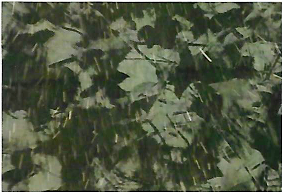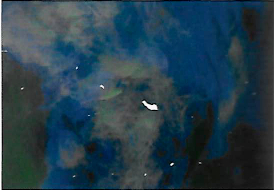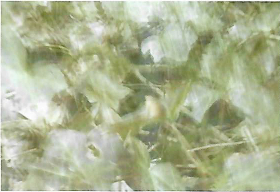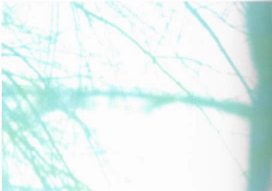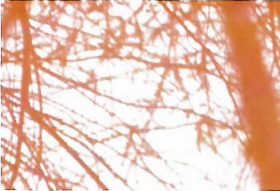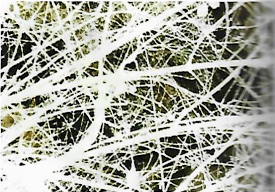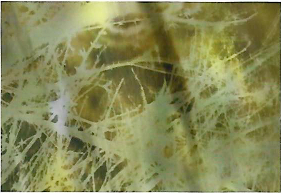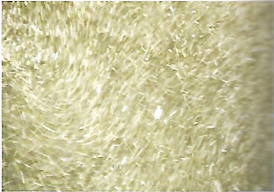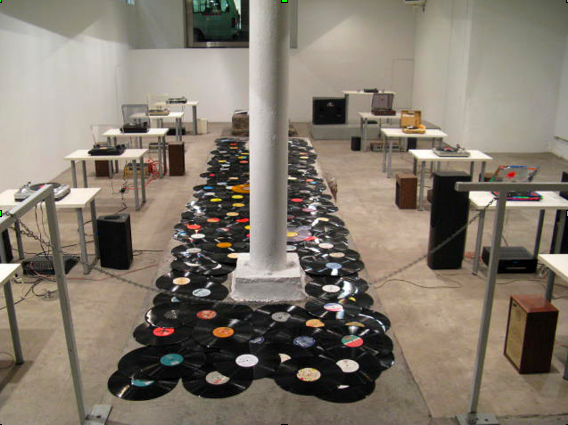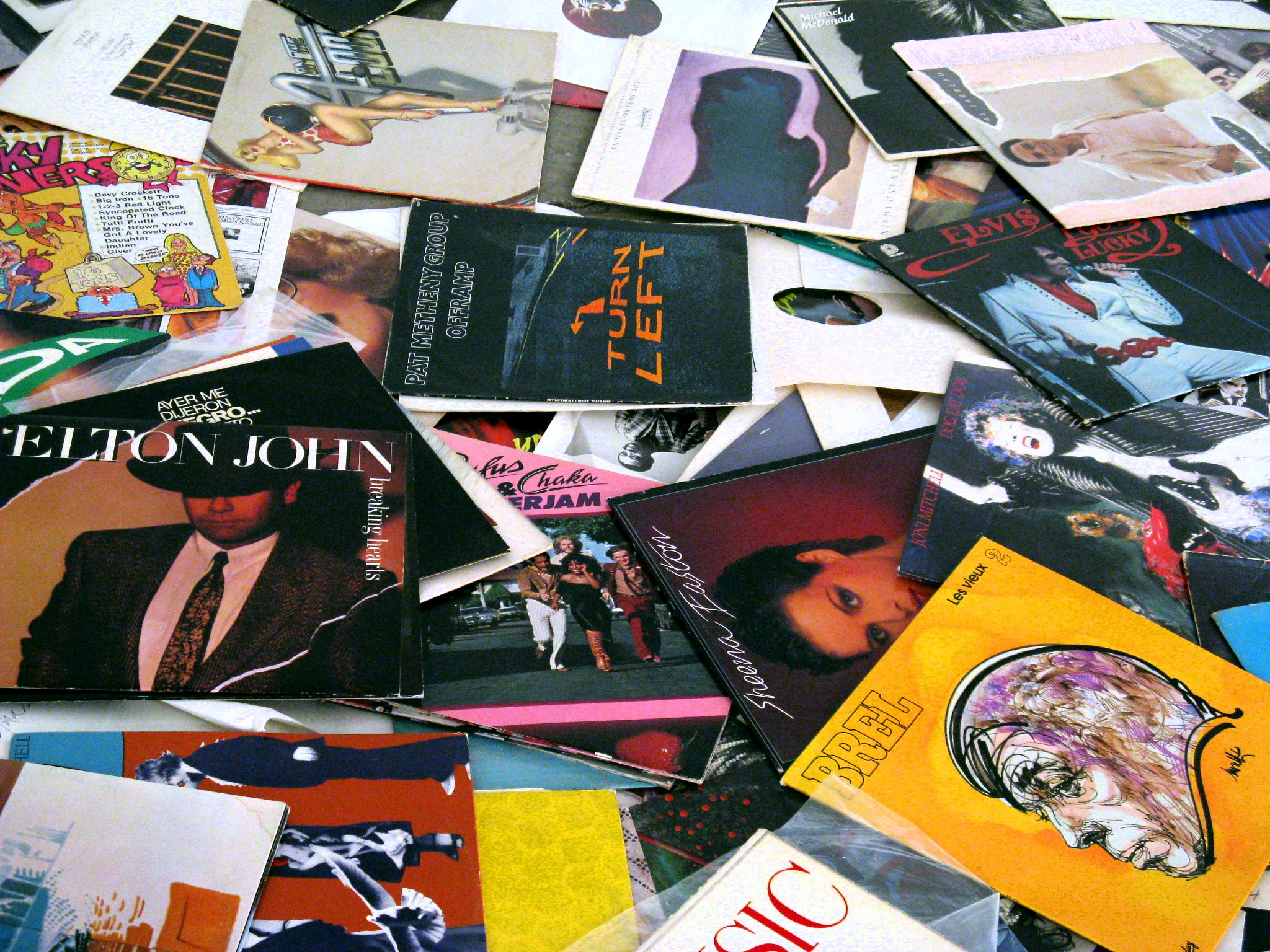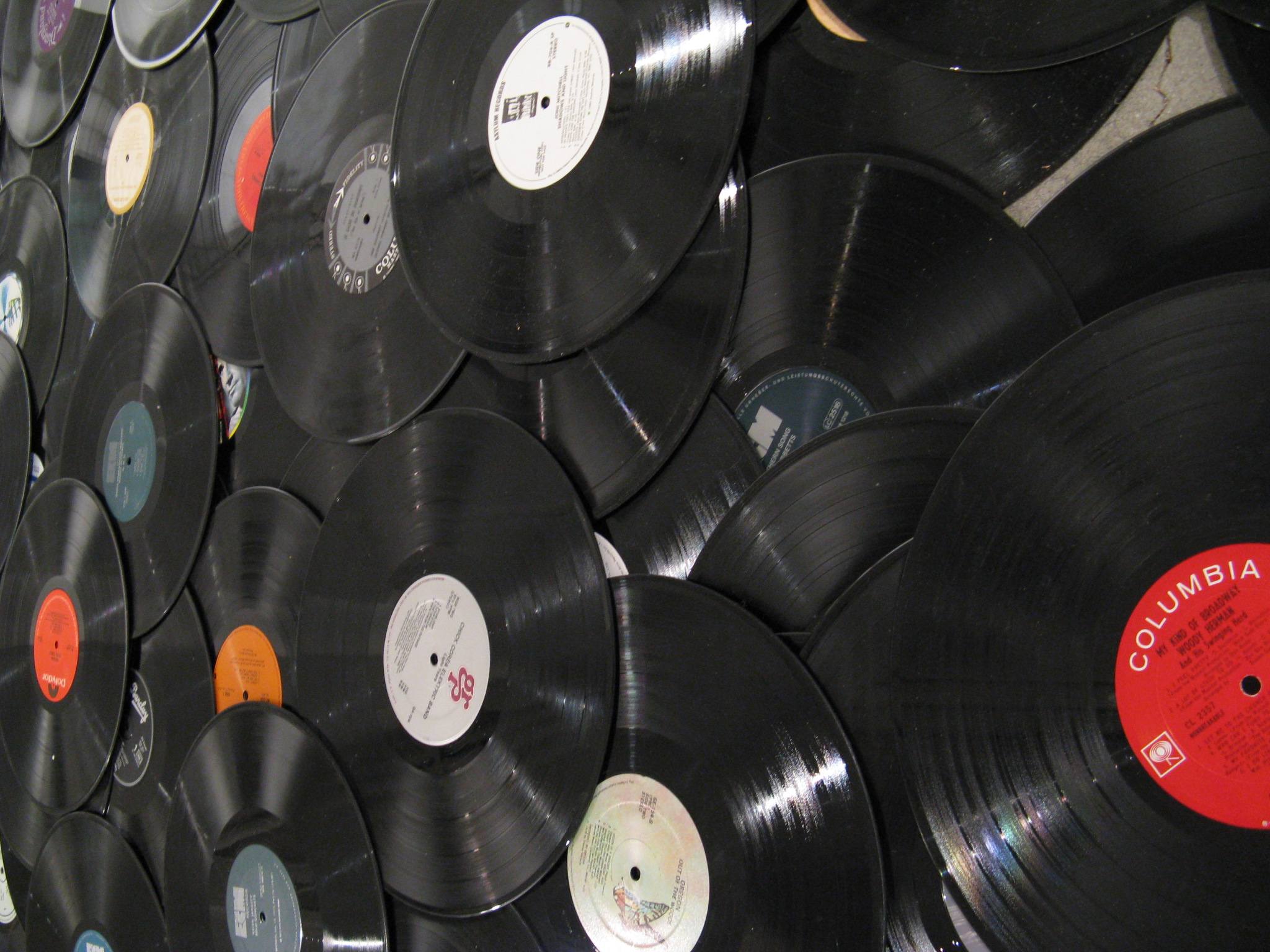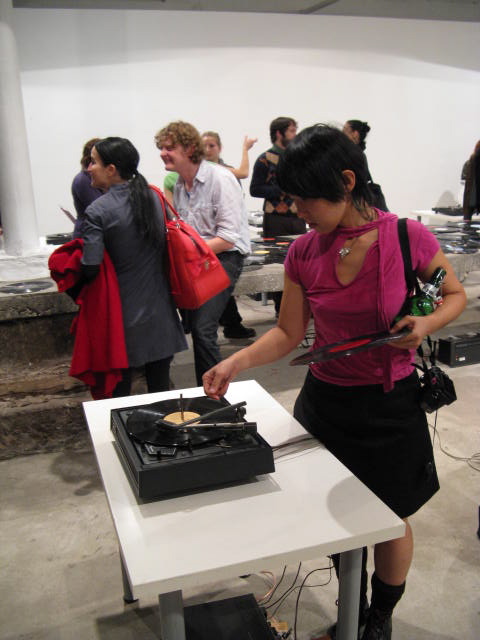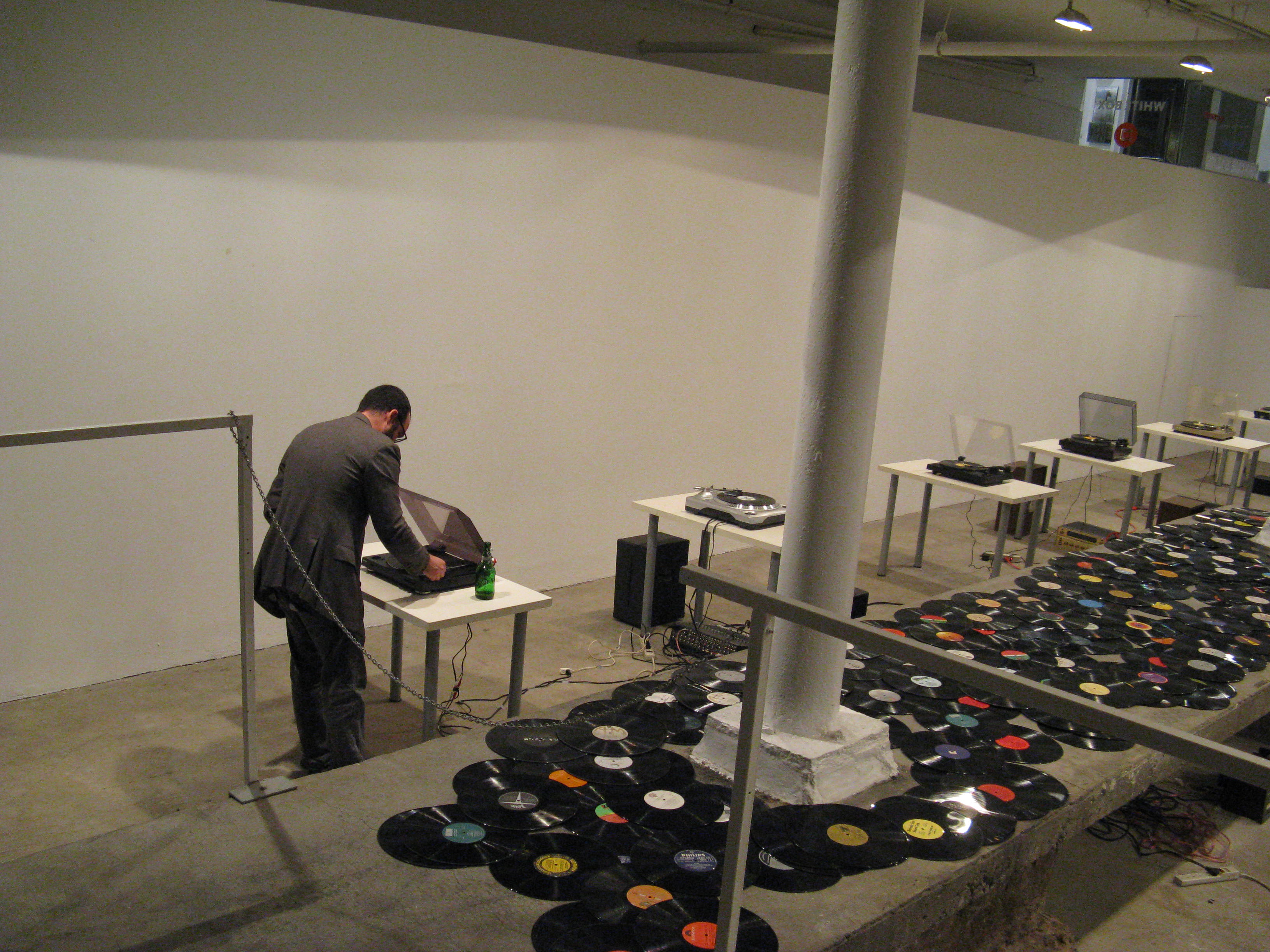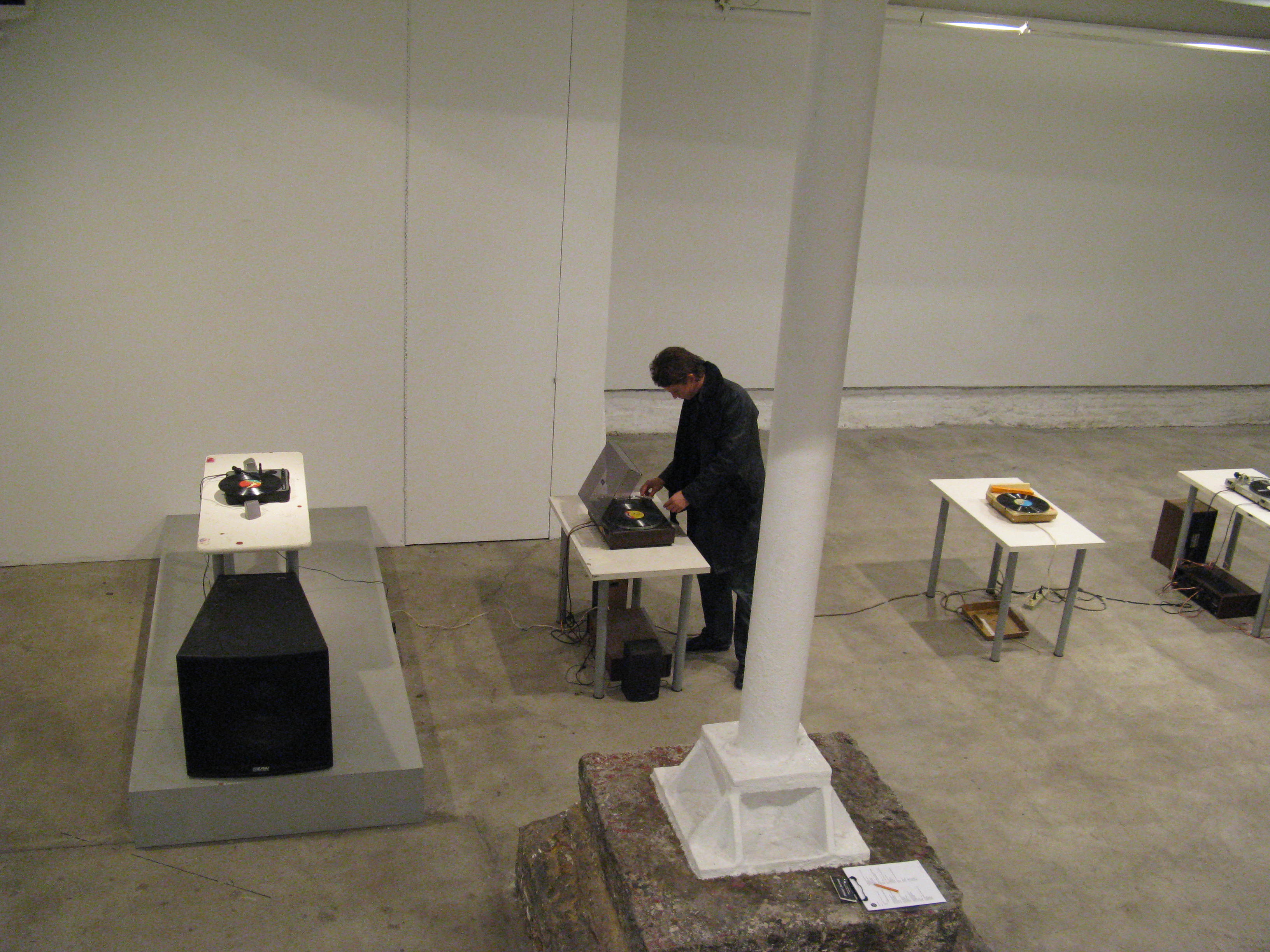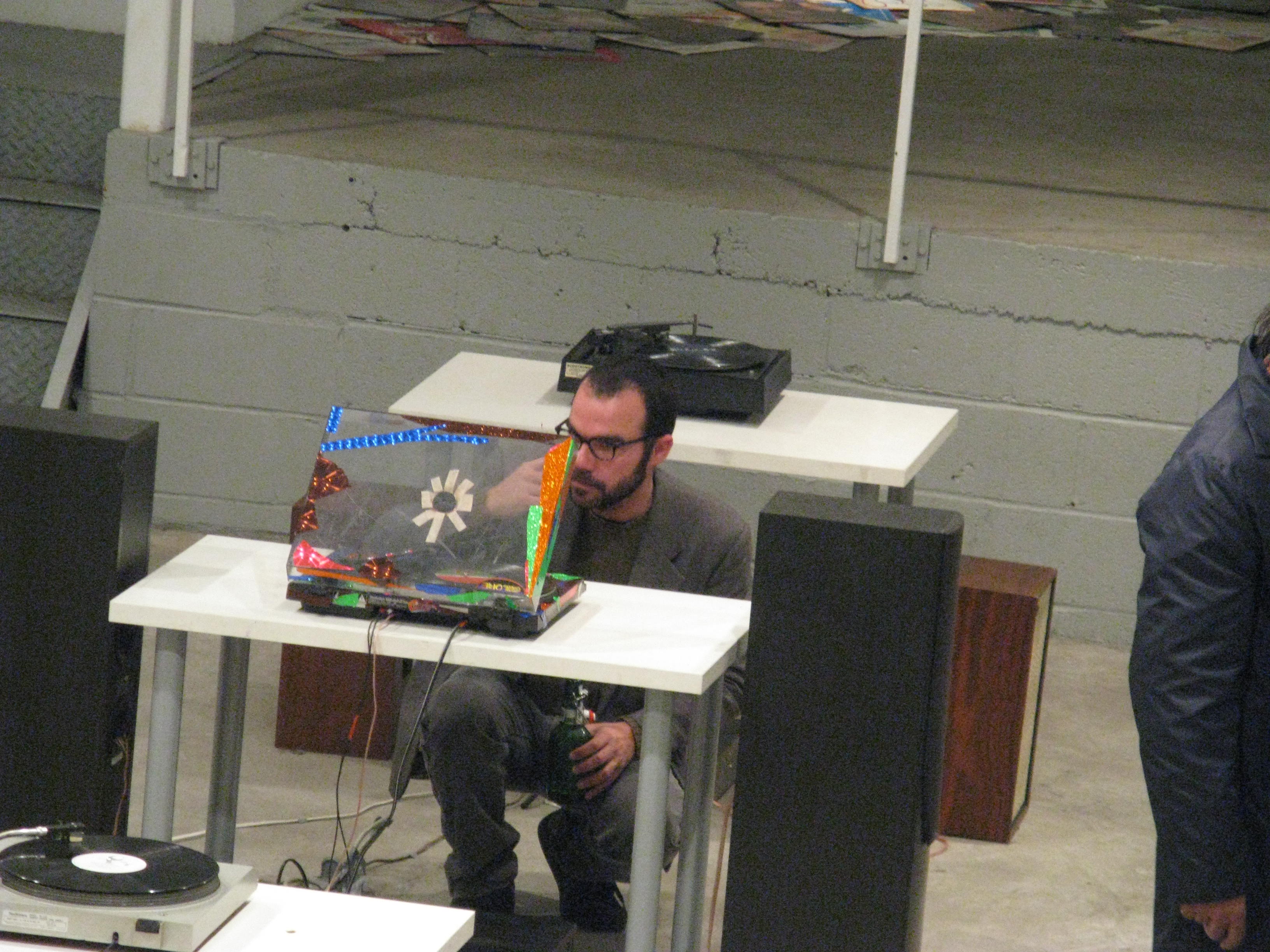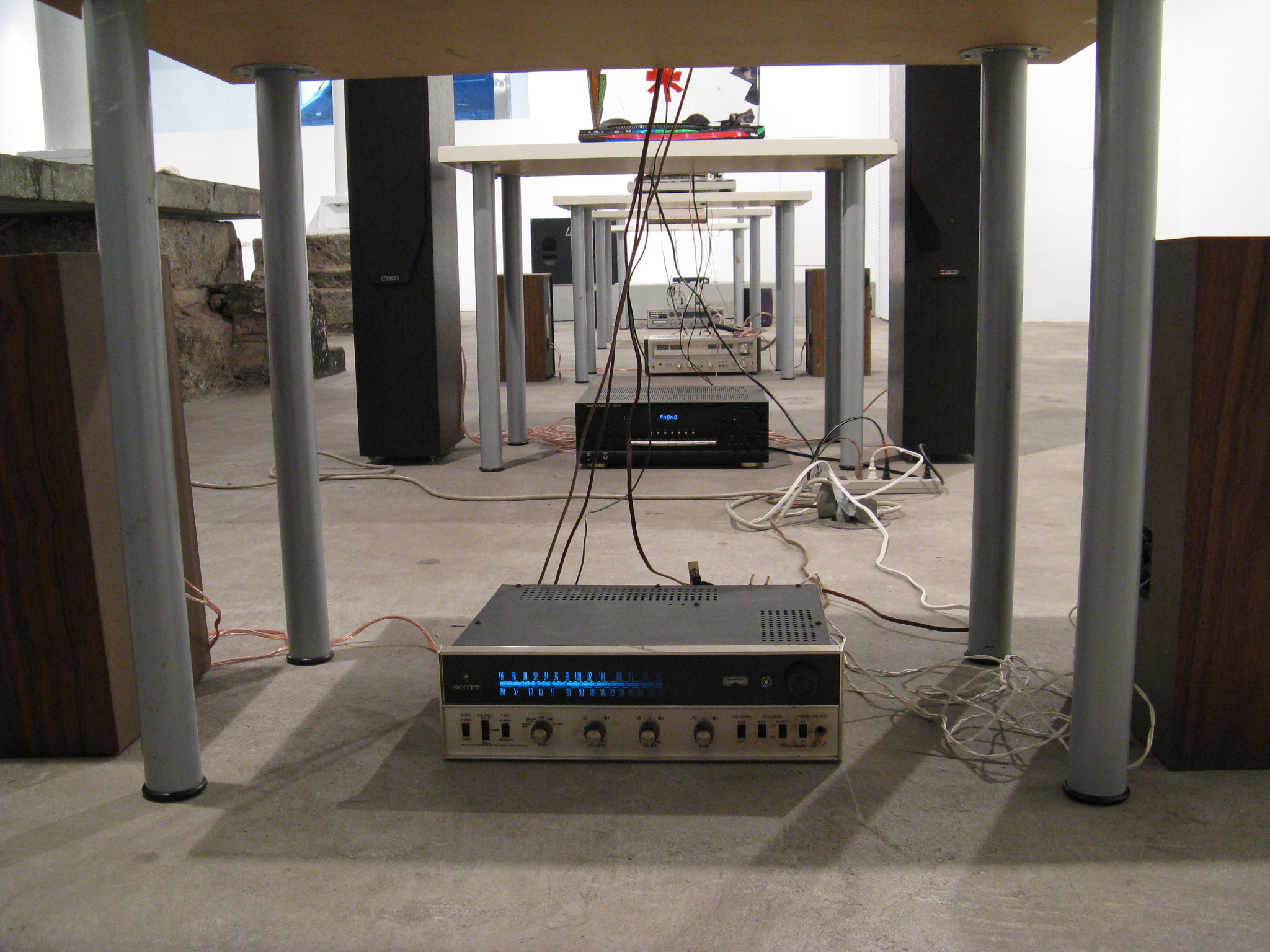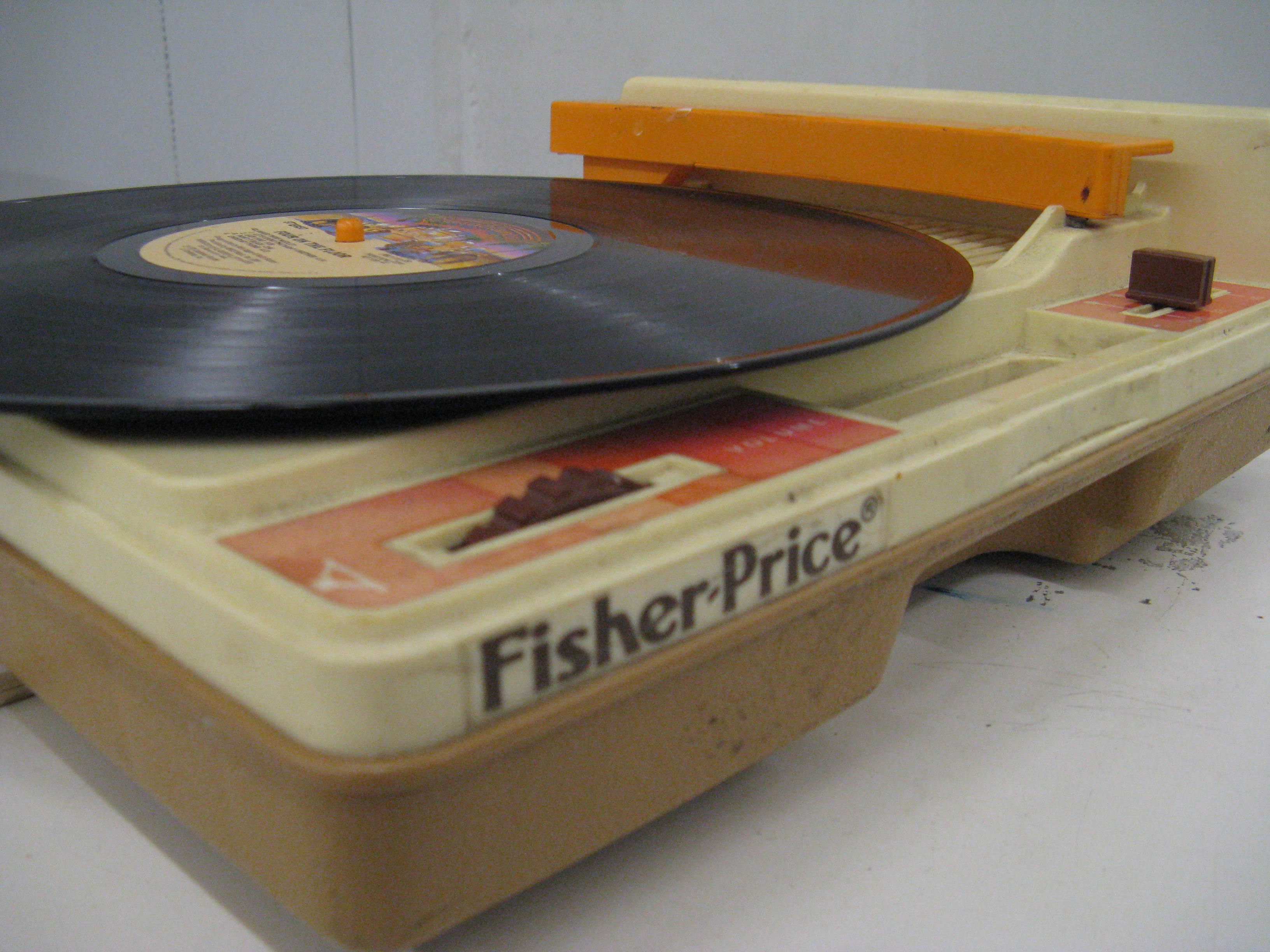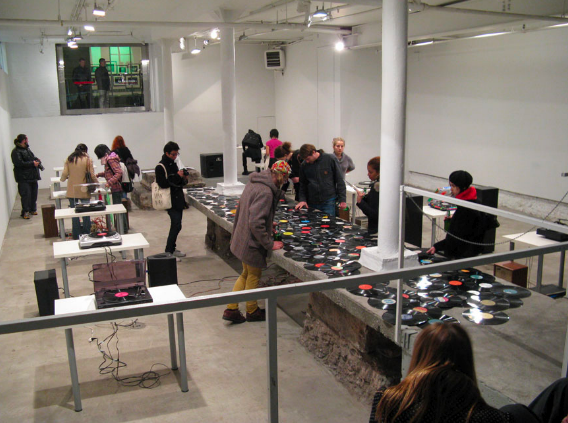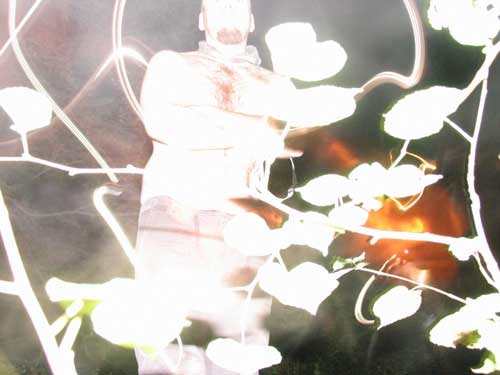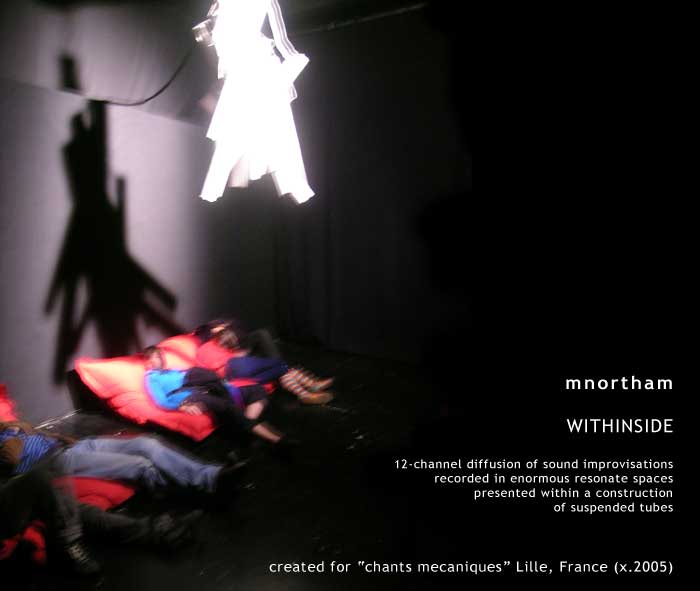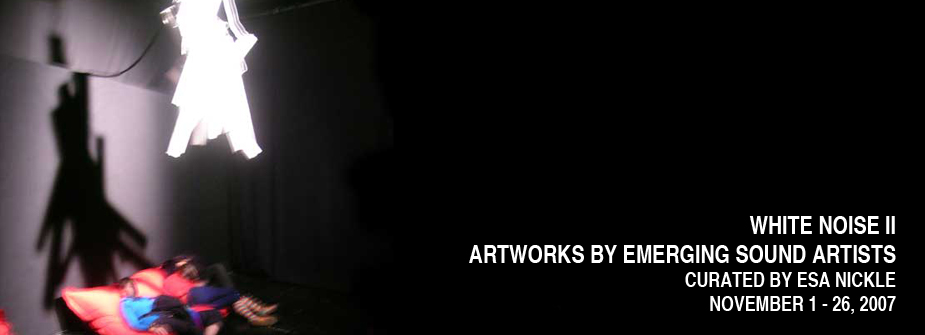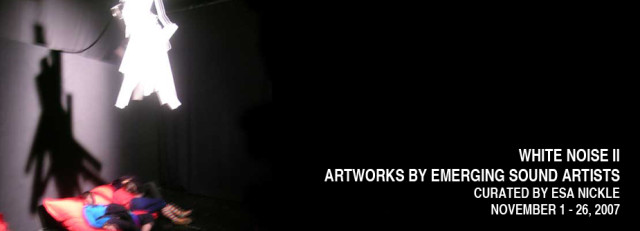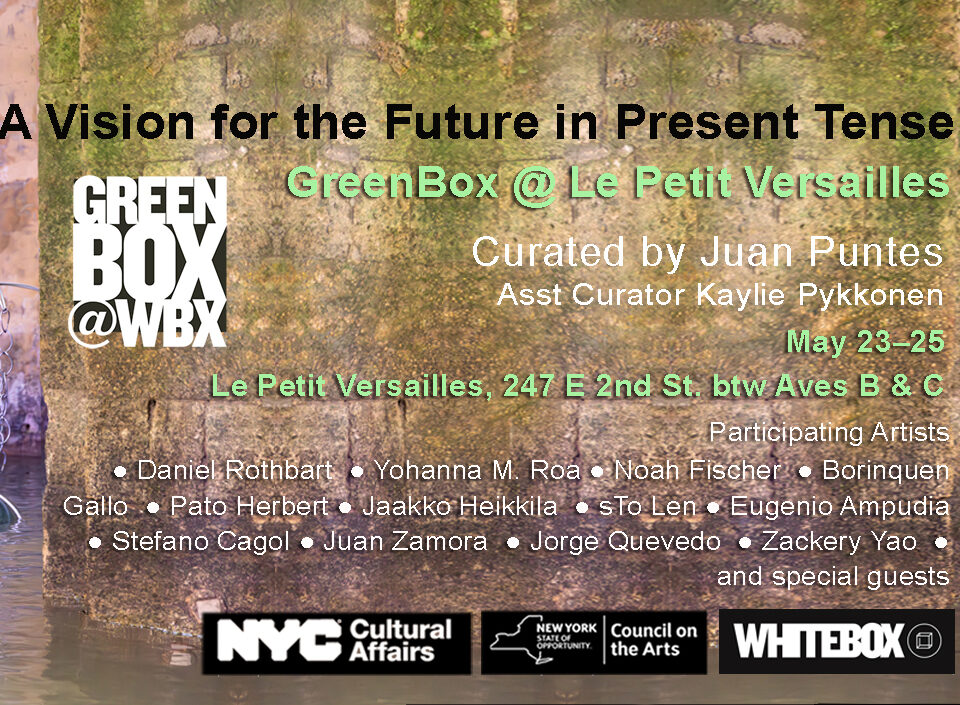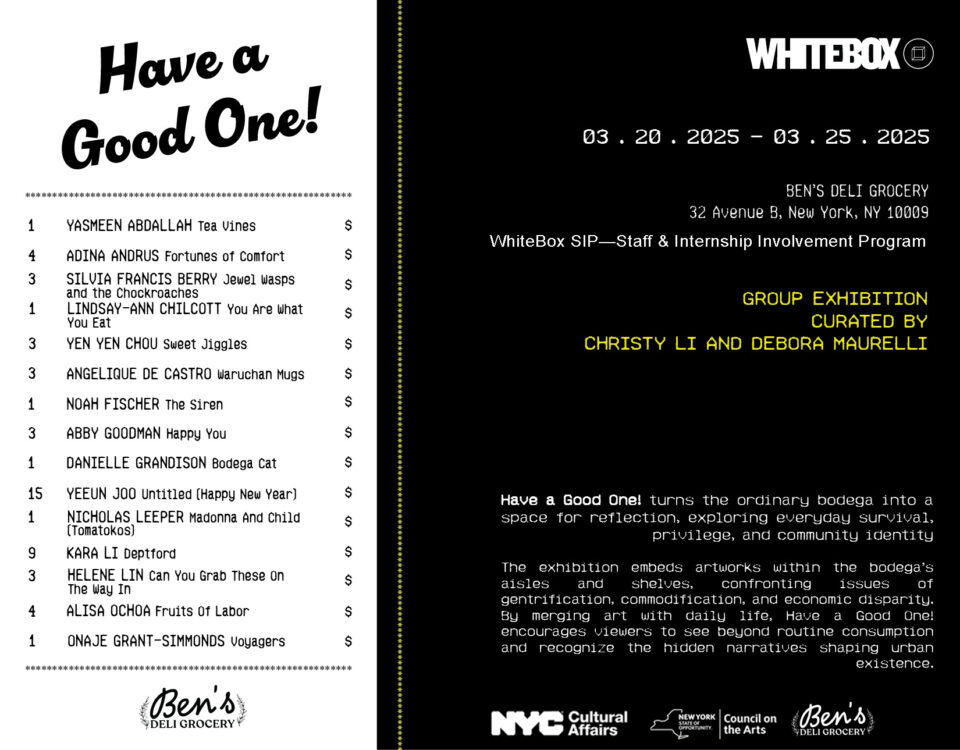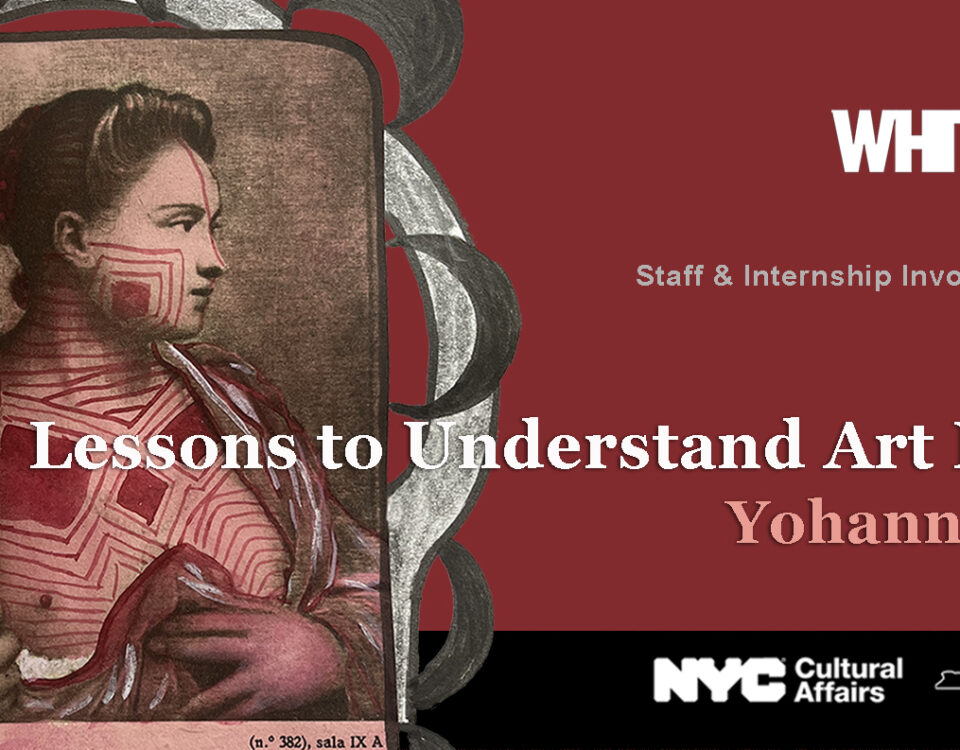WOJTEK ULRICH: SCUM
October 2, 2007STREAM
November 30, 2007Curated by Esa Nickle
November 1 – 26, 2007
Saturday, November 3, 2007, 6-8pm | Opening Reception
White Box presents White Noise II in collaboration with its New Composers Series and as part of the Second Biennale of PERFORMA 07. Its goal is to provide a vital group of today’s sound artists with a rare opportunity to either produce new works or stage and premier existing works that are non-commercial, experimental, innovative, bringing a new vitality and excitement to today’s sound art field. Michael Northam, Eva Sjuve, James Fei, Kato Hideki and Kabir Carter have been selected to take part in this exhibition. These young and emerging artists explore the intersection of sound, performance and mobile media in unique ways and presentations.
Purists define sound art as recorded sound by visual artists presented in an installation setting. White Noise II challenged that definition by inviting five artists who crisscross the boundaries between sound art, experimental music, and performance to present new work in a gallery space and in the flesh. The one-week program showcased various approaches. deploying sound effects and improvised instruments, DIY engineering, field recordings collected on nomadic journeys, audience participation, and public and environmental intervention- all realized in full view of an audience – to prove that sound art could indeed go live. In fact the artists performed only four of the projects. Visitors performed a fifth work. The groundbreaking and rarely realized 1969 John Cage piece 33 1/3, providing a historical reference point for the exhibition, which otherwise focused on asking the artists – most of whom create work strictly for audio recordings- to reveal their methods, allowing viewers to watch as sounds appeared before their eyes.
The Second Biennale of Performa 07 and White Noise II will be complemented with a one-week presentation, from November 19th to November 26th, 2007, of the 1969 musical composition by John Cage titled 33 1/3.
The final week of White Noise II offers a unique opportunity to visitors to become acquainted with a pivotal 1969 work by John Cage, a forerunner of the American avant-garde. Visitors entering White Box’s space are welcomed by an audio-visual piece made of 12 phonographs and an assorted random group of 200 to 300 albums where they are invited to create their own musical score. The truly interactive piece shows Cage’s extraordinary blend of music, Fluxus and Performance Art, where people pick random music and spin their selection on the 33 1/3 record turntables, creating new music. The piece turns the concept of authorship on its head and, in a classic Cage Buddhist and democratic gesture, during their visit each person becomes a temporary composer–performer. The new and totally original musical score is composed from the blend of each individual visitor-turned-composer. In the end, the experience may lead to several surprising daily symphonic concerts.
Schedule:
Tuesday, November 20 @ 6pm | Special opening
Open session of audience interaction with SHARE–an improvisational electronic emergent art community and forum
Saturday, November 24
Open session of interjected-random readings of Gertrude Stein by Mary Beth Edelson
November 1 – 10
live performance
Saturday, November 3 @7pm
Michael Northam: Membrane Seeding and For Fields
A nomadic collector and master collagist of sounds macro- and microscopic, Michael Northam describes his practice of layering held recordings over and over again until organic patterns emerge as “sound composting.“ For the installation Membrane Seeding, Northam filled the exhibition space with speakers emitting intense harmonics from out-of-sync loops and with videos of monochromatic designs morphing together projected at various angles to create linear patterns mixed across perpendicular planes. Combined, the immersive sonic and visual elements sought to provide the audience with the experience of “seeing how one hears.”
For Fields, a new hour-long performance, was composed of four segments, each a simple meditation within a soundscape created through the amplification of the slightest of movements. Sitting on the catwalk in the center of the gallery, Northam performed with a loose jumble of objects and a laptop in front of him. He began by dragging a contact microphone over the surfaces of accumulated paper and plastic bags, a cardboard box, a few Tibetan bowls, and bells, which gave off surprisingly rich and diverse sounds that were looped together to create a rough tapestry of noise. Northam then began to walk through the audience and around the exhibition space while playing a flute, using the “overblowing” technique of forceful exhalation to reach the upper register of the instrument, building up wispy layers of harmonics. Returning to the assembled objects, Northam used found electronics to create microtonal interactions of sound oscillations and waves of dissonant frequencies that crashed and subsided. In the last segment, Northam strapped the insides of a toy piano to his hand like a glove. Moving his fingers created sound sequences that, when processed through his laptop, transformed into electronic loops of broken tones. In a final flourish, he mixed the loops with deep-space radio transmissions.
-Esa Nickle, based on a text by Michael Northam
Friday, November 9 @ 6pm
James Fei: When Tobacco Smoke Smells Also of the Mouth Which Exhales It
James Fei invited two fellow composer-performers, Kato Hideki and Ed Tomney, to join him in writing scores that would replicate the sound effects from an undisclosed feature film of their choice. Performing simultaneously for ninety minutes (the approximate length of a feature film), each sat or stood behind a large table littered with analog electronics and an assortment of everyday objects- balloons, electric toothbrushes, supply catalogues, electric fans, bowls of water, beans, aluminum pie sheets, dishes, paint brushes, empty cans, and audio tape among them- that would help them approximate the noises of their film’s Foley artist. Divorced from the visuals and narratives of the films, some sounds, like footsteps, were identifiable, while reverberating drones and piercing trills were mysterious. Emanating from separate speakers, each performer’s sounds strictly followed the timing of their respective films, and were thus separated by pauses of irregular duration. This created a dynamic variation between sound and silence, which drew the audience’s attention to each performer in turn or created unusual blends of overlapping sounds. At one moment. one artist’s score might be completely obliterated by violent noises coming from another’s, while at another, an accidental synchronicity could seem perfectly planned.
-David Novak
Saturday, November 10 @ 7pm
Eva Sjuve: 13 Volts and 1 Carrot and Go Karamazov
In two short solo performances, Swedish artist Eva Sjuve utilized costume, motion, and digital electronics to trigger sound with action. Sjuve’s instrument was a dark men’s suit embedded with nine sensors and real-time processing that captured and mixed the sounds of her improvised gestures and movements around the space. In 13 Volts Sjuve added a fake pig’s head to this outfit and brandished a bunch of carrots – a demented riff on a familiar Scandinavian folktale – while in Go Karamazov she wore a fake beard and mustache, gripping a bottle of vodka as she staggered around the performance space. Dimly lit by two bare light bulbs, one red and one blue, Sjuve animated these social-outcast characters with strange and wonderful hybrids of humor and menace, dance and storytelling.
-Esa Nickle
November 13-17
Saturday, November 17 @6pm | Live Performance
Kabir Carter: Overexcited Recaptures
Kabir Carter, who typically presents work in public spaces using radio scanners, created an intimate, site-specific sonic tableau from behind a small table jammed with recording and mixing equipment. A single microphone captured ambient sounds, which Carter then fed into a mixer, manipulated, and amplified back into the exhibition space. Visitors who noticed that Carter was remixing unintentional live sounds of walking and talking inserted themselves by clapping their hands or stamping their feet. The few who spoke directly into the microphone heard themselves echo back five minutes later.
-Esa Nickle
November 19 – 26 @11am–6pm
John Cage: 33 1/3, 1969 Curated by Juan Puntes
It is said that John Cage wrote 33 1/3- a composition for twelve turntables, twelve amplifiers, twelve sets of speakers, and three hundred records- to encourage participation among audiences without musical training. No specific duration or instructions are provided for participants. Organizers, too, are on their own in gathering the requisite instruments. We put out a call for loans or donations via e-mail lists and Craigslist and collected an eclectic range of audio equipment- from toy record players to professional DJ rigs- along with a motley collection of unloved LPs, which White Box director Juan Puntes laid out on a catwalk. On opening night four members of SHARE, an improvisational and predominantly electronic art community that plays together every Sunday night in Manhattan, led the performance. Over the rest of the week, visitors to the gallery joined in the unpredictable line-up of random performances, or just listened.
-Esa Nickle
This exhibition is generously supported by the Greenwall Foundation. Additional support for White Noise II was received from the Experimental Television Center’s Presentation Funds Program. The Experimental Television Center ’s Presentation Funds Program is supported by the New York State Council on the Arts.
The New Composers Series has received generous support from the New York State Music Fund, established by the New York State Attorney General at Rockefeller Philanthropy Advisors and is produced by White Box with the collaboration of the Electronic Music Foundation and in association with Diapason Sound Art Gallery and New Wilderness Foundation Inc.
